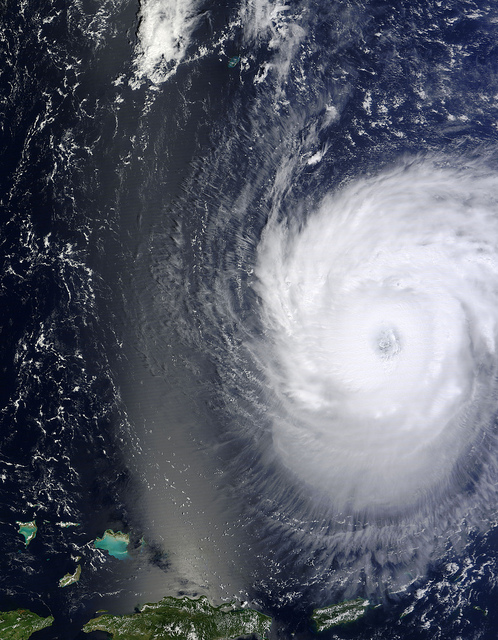Forecasting The Next Big Technology
 When a hurricane is on the horizon, we are all glued to our TVs. We want to know where it track so we know we’ll be safe. Will it track north and rumble over the top of us or will it track east and head out to sea? This is not trivial. In one scenario we lose our house and in the other the crazy surfers get to ride huge waves.
When a hurricane is on the horizon, we are all glued to our TVs. We want to know where it track so we know we’ll be safe. Will it track north and rumble over the top of us or will it track east and head out to sea? This is not trivial. In one scenario we lose our house and in the other the crazy surfers get to ride huge waves.
The meteorologist shows us a time-lapse of the storm center hour-by-hour. It was one hundred miles off shore an hour ago, it’s fifty miles off shore now and it will hit the shoreline in an hour. Drawing a line from where it was, through its location in the moment, the meteorologist can extrapolate where it will be an hour from now. In the short term, the storms trajectory will be unchanged and its momentum will help it maintain its pace. It’s pretty clear to everyone where the storm will be in an hour. No magic here.
But the good meteorologists can forecast a hurricane’s path days in advance. In a phenomenological way, they use behavior models of past storms, assume this storm is like past storms, turn the crank and forecast its trajectory. And they’re right more times than not. And they’re right enough to determine who should evacuate and who should sit tight. This is borderline magic.
The best meteorologists know where hurricanes want go because they understand hurricanes. They know hurricanes want to run in straight lines, if not follow gentle curves. They know hurricanes get anxious when they hop from sea to land, and they know, given the choice, will skirt the coastline and head back home to the salt water. Meteorologists know the rules hurricane’s live by and use that knowledge to tighten their forecast of the storm’s path.
Just as hurricanes have a desire to follow their hearts, technologies have a similar desire climb the evolutionary ladder. Just as hurricanes behave like their predecessors, technologies behave like their grandparents, aunts and uncles. And just as a meteorologist, using their knowledge of historical patterns and an understanding of hurricane genetics can forecast the path of a hurricane, technologists can forecast the path of technologies using historical patterns and an understanding of what technologies want.
And like with hurricanes, the best way to forecast the path of a technology is to define where it was, draw a line through where it is and project its trajectory into the future. Like hurricanes, technologies move in straight lines or gentle S-curves, so their next move is easy to forecast. If a technology has improved year-over-year, it will likely continue to improve. And if this year’s performance is the same as last year, it’s behavior will remain unchanged going forward. That’s how it goes with technologies.
The best technologists are like horse whisperers in that they can hear the inner voice of technologies. They know when a technology is ready to grow from infant to adolescent and know when a technology is ready to retire. The best technologists can read the tea leaves of the patent landscape and, knowing the predisposition of technologies, can forecast the next evolution. But just as some ranch owners don’t believe in horse whisperers, some company leaders don’t believe technology whisperers can forecast technologies.
But for believers and non-believers alike, it’s more effective to compare forecasting capabilities of technologists with the forecasting capabilities of meteorologists. The notions of trajectory and momentum have clear physical interpretations for hurricanes and technologies, and historical models of storm trajectories map directly to evolutionary paths of technologies.
If you’re looking to forecast where the next big storm will make landfall, hire a great meteorologist. But if you’re looking to forecast when the next technology will rip the roof off your business model, hire a great technology whisperer.
Image credit – NASA
 Mike Shipulski
Mike Shipulski